A list of content needs to be displayed in each tableviewcell, So here I used tableview inside Tableview cell. But the problem is main tableview cell height is not changing according to the content. I don't want to fix the UITableViewCell height, I want it to be adjusted dynamically based on the content.
func tableView(_ tableView: UITableView, heightForRowAt indexPath: IndexPath) -> CGFloat {
return UITableView.automaticDimension
}
func tableView(_ tableView: UITableView, numberOfRowsInSection section: Int) -> Int {
return 10
}
func tableView(_ tableView: UITableView, cellForRowAt indexPath: IndexPath) -> UITableViewCell {
let cell = tableView.dequeueReusableCell(withIdentifier: "cell") as! SubCell
if indexPath.row%2==0{
cell.backgroundColor = .orange
}else{
cell.backgroundColor = .green
}
return cell
}
class SubCell: UITableViewCell, UITableViewDelegate,UITableViewDataSource {
func tableView(_ tableView: UITableView, heightForRowAt indexPath: IndexPath) -> CGFloat {
return UITableView.automaticDimension
}
func tableView(_ tableView: UITableView, numberOfRowsInSection section: Int) -> Int {
return 4
}
func tableView(_ tableView: UITableView, cellForRowAt indexPath: IndexPath) -> UITableViewCell {
let cell = tableView.dequeueReusableCell(withIdentifier: "cell2") as! SubCell2
cell.titleLabel.text = "asdf asdf asdf asdf asdf adfs asdf asdf asdf asdf asdf asdf asd fasd fasd fasd fasd fasd fasd f asdf asdf asdf asdf asd fasd fasd fasd fasd fasd fasdf asdf asd fasd 1234"
return cell
}
@IBOutlet weak var tablView2: UITableView!
override func awakeFromNib() {
super.awakeFromNib()
// Initialization code
}
override func setSelected(_ selected: Bool, animated: Bool) {
super.setSelected(selected, animated: animated)
}
}
class SubCell2: UITableViewCell {
@IBOutlet weak var titleLabel: UILabel!
override func awakeFromNib() {
super.awakeFromNib()
// Initialization code
}
override func setSelected(_ selected: Bool, animated: Bool) {
super.setSelected(selected, animated: animated)
// Configure the view for the selected state
}
}
Expected Output :
Actual Output:
Constraints:


